Today Current Affairs: 17th September 2021 for UPSC IAS exams, State PSC exams, SSC CGL, State SSC, RRB, Railways, Banking Exam & IBPS, etc
Table of Contents
Connectivity Between India And Southeast Asia:
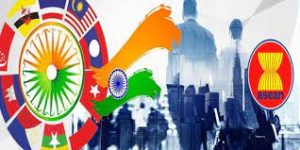
At the virtual ASEAN (Association of Southeast Asian Nations) summit on Future of India-ASEAN Connectivity Partnerships, the Indian government underlined the importance of cross-border connectivity between India and Southeast Asian nations.
- ASEAN brings together ten Southeast Asian states – Brunei, Cambodia, Indonesia, Laos, Malaysia, Myanmar, the Philippines, Singapore, Thailand and Vietnam – into one organisation.
Connectivity between India and Southeast Asia:
- India currently is working with ASEAN on multiple connectivity projects, through land, water, and air.
- Giving substance to ASEAN-India relations through connectivity will gradually change the geopolitical landscape of this region.
- In this context, India has now been actively developing infrastructure in Northeastern India.
- Bangladesh-China-India-Myanmar (BCIM) Corridor is part of this.
- These connectivity projects will not only curb existing insurgencies, but also help India’s northeastern states to develop their economic potential and integrate with mainland India.
- Further, India-ASEAN Free Trade Agreement (FTA) is central to India’s growing engagement with her eastern neighbours.
- It will enable small and medium-sized enterprises in the border areas to explore new business opportunities.
Shoonya Campaign: NITI Aayog:

NITI Aayog and Rocky Mountain Institute (RMI) and RMI India’s have launched the Shoonya Campaign.
- It is an initiative to promote zero-pollution delivery vehicles by working with consumers and industry.
- RMI is an independent nonprofit organization founded in 1982.
Shoonya Campaign:
- Electric Deliveries: The campaign aims to accelerate adoption of Electric Vehicles (EVs) in the urban deliveries segment and create consumer awareness about the benefits of zero-pollution delivery.
- Shoonya Brand: A corporate branding and certification programme is being launched to recognise and promote industry’s efforts towards transitioning to EVs for final-mile deliveries.
- It will help e-commerce companies to distinguish their offerings from those of their competitors.
- Online Tracking Platform : An online tracking platform will share the campaign’s impact through data such as vehicle kilometers electrified, carbon savings, criteria pollutant savings and other benefits from clean delivery vehicles.
Food Chain Contamination:
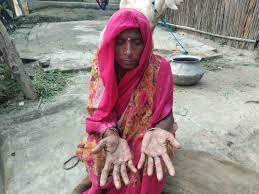
A recent study in Bihar has found Arsenic contamination not only in groundwater but in the food chain as well.
- The research study was a part of the Project Nature and Nurture in Arsenic Induced Toxicity of Bihar jointly funded by the British Council in the United Kingdom and Department of Science and Technology in India.
Major Findings:
Food Chain Contamination:
- Arsenic has found its way into the food chain – mainly rice, wheat and potato.
- Arsenic contamination in groundwater has been a growing concern in several parts of the country.
- Arsenic is present in the groundwater as it is used on a large scale for irrigation by farmers. That is how it finds its way into the food chain as well.
Food vs Water Contamination:
- The food had more arsenic content than drinking water, even when arsenic levels in drinking water was above the World Health Organization (WHO) provisional guide value of 10 micrograms per litre (μg/L).
- The concentration was higher in cooked rice compared to raw rice.
Arsenic:
- It is an odourless and tasteless metalloid widely distributed in the earth’s crust.
- It is naturally present at high levels in the earth crust and groundwater of a number of countries. It is highly toxic in its inorganic form.
World Ozone Day:
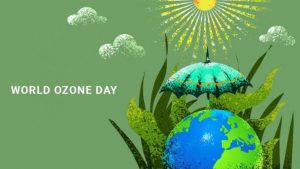
Every year, 16th September is observed as the International Day for the Preservation of the Ozone layer (World Ozone Day).
- After the Montreal Protocol on Substances that deplete the ozone layer signed by almost every country in 1987, the United Nation General Assembly, in 1994, proclaimed this day as the International Day for the Prevention of the Ozone Layer.
- The Montreal Protocol has led to the phase-out of 99% of ozone-depleting chemicals in refrigerators, air-conditioners and many other products.
- The latest Scientific Assessment of Ozone Depletion completed in 2018, shows that parts of the ozone layer have recovered at a rate of 1-3% per decade since 2000.
- Ozone layer protection efforts have also contributed to the fight against climate change by averting an estimated 135 billion tonnes of carbon dioxide equivalent emissions, from 1990 to 2010.
- In September 2009, the Vienna Convention and the Montreal Protocol became the first treaties in the history of the United Nations to achieve universal ratification.
- Establishment of a mechanism for cooperation to take action to protect the ozone layer was formalized in the Vienna Convention in 1985.
- In 2016 as a continuation of the global effort the Parties to the Montreal Protocol reached agreement at their 28th Meeting of the Parties in Kigali, Rwanda to phase-down hydrofluorocarbons (HFCs).
- Recently, the Indian Government approved the ratification of the Kigali Amendment to the Montreal Protocol.
- 2021 Theme: Montreal Protocol – Keeping us, our food, and vaccines cool.
Black Tigers In Similipal Tiger Reserve (STR):
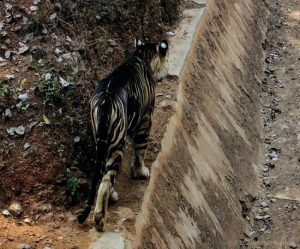
Scientists have unraveled the mystery behind Odisha’s ‘Black Tigers’ in Similipal Tiger Reserve (STR)
- The STR is the only tiger habitat in the world with melanistic tigers, which have broad black stripes running across their bodies and thicker than those seen on normal tigers.
- Black Tigers are a rare colour variant of the tiger and are not a distinct species or geographic subspecies.
- The coat colouration and patterning that make the wild cats appear dark boil down to a single mutation in the Transmembrane Aminopeptidase Q (Taqpep) gene.
- The abnormally dark or black coat in such tigers is termed pseudo melanistic or false coloured.
- If you pick any tiger from Similipal, the chance that it carries the mutant gene is almost 60%.
Factors for Occuring Black Colour:
- Due to Geographic Isolation, genetically related individuals have been mating with each other for many generations in Similipal, leading to inbreeding.
- It should be noted that this has important implications for tiger conservation as such isolated and inbred populations are prone to extinction over even short periods of time.
Similipal Tiger Reserve:
- It was formally designated a tiger reserve in 1956 and brought under Project Tiger in the year 1973. It was declared a biosphere reserve by the Government of India in June, 1994.
- It has been part of the UNESCO World Network of Biosphere Reserve since 2009.
- It is part of the Similipal-Kuldiha-Hadgarh Elephant Reserve popularly known as Mayurbhanj Elephant Reserve, which includes 3 protected areas i.e. Similipal Tiger Reserve, Hadagarh Wildlife sanctuary and Kuldiha wildlife sanctuary.
Mu Variant Of Covid-19:
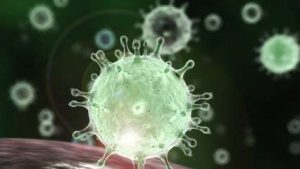
The World Health Organisation (WHO) has added a new variant of Covid-19 in the list of Variants of Interest (VOI) and named it Mu (B.1.621). It has also added C.1.2 as a new VOI.
- According to INSACOG (Indian SARS-CoV-2 Genomics Consortium), India has so far not seen Mu and C.1.2, and the Delta variant and its sub-lineages continue to be the main Variants of Concern (VOC).
- C.1.2 is a sub-lineage of the C.1 variant described in South Africa but did not spread globally.
- Mu belongs to the lineage B.1.621 variant and named after the twelfth letter of the Greek alphabet. It was first detected in Colombia in January 2021.
- It has a constellation of mutations that indicate potential properties of immune escape. It has several substitutions affecting the Spike Protein and amino acid changes.
- It has seen mutations, E484K, N501Y, P681H, D614G, which have been reported in other VOIs and VOCs.
- It is the fifth ‘VOI’ to be monitored by WHO. The other four VOIs are:
- Eta (lineage B.1.525), Iota (lineage B.1.526), Kappa (lineage B.1.617.1), and Lambda (lineage C.37).
- Variants of Interest:
- A variant is placed in the VOI list if it is seen to have certain “genetic changes that are predicted or known to affect virus characteristics such as transmissibility, disease severity, immune escape, diagnostic or therapeutic escape”.
- To be added to the VOI list, a variant must also be “identified to cause significant community transmission or multiple Covid-19 clusters in multiple countries”, and suggest “an emerging risk to global public health”.
- Variants of Concern:
- A VOI can become a VOC if it is demonstrated to be associated with an increase in transmissibility or virulence, or with a “decrease in effectiveness of public health and social measures or available diagnostics, vaccines, and therapeutics”.
- Currently, four variants of the coronavirus are designated as variants of concern:
- Alpha (lineage B.1.1.7, the so-called ‘UK variant’), Beta (lineage B.1.351, ‘South Africa variant’), Gamma (lineage P.1, ‘Brazil variant’), Delta (lineage B.1.617.2).
6th Edition Of Exercise Peaceful Mission:

The 6th edition of Exercise Peaceful Mission is being hosted by Russia in the Orenburg Region of South West Russia from 13th to 25th September 2021.
- India participated for the first time in the 5th edition of the Exercise (2018).
- It is a Multilateral and Joint Counter Terrorism Exercise, which is conducted biennially as part of military diplomacy between Shanghai Cooperation Organisation (SCO) member states.
- The SCO is an economic and security bloc in which India and Pakistan were admitted as full members in 2017. Its founding members included China, Russia, Kazakhstan, Kyrgyzstan, Tajikistan and Uzbekistan.
- The scope of the exercise includes professional interaction, mutual understanding of drills & procedures, establishment of joint command & control structures and elimination of terrorist threats.
- The aim is to foster close relations between SCO member states and to enhance abilities of the military leaders to command multi-national military contingents.
- The Indian military contingent comprising an all arms combined force of 200 personnel including 38 personnel from the Indian Air Force is participating in the Exercise 2021.
Right To Be Forgotten:

Last week, the Delhi High Court upheld the view that the “Right to Privacy” includes the “Right to be Forgotten” and the “Right to be Left Alone”.
- The court said this in an order passed in response to a suit filed by an unnamed Bengali actor.
- Earlier in July, Ashutosh Kaushik who won reality TV shows Bigg Boss in 2008 and MTV Roadies 5.0 approached the Delhi High Court with a plea saying that his videos, photographs and articles etc. be removed from the internet citing his “Right to be Forgotten”.
- The Right to be Forgotten falls under the purview of an individual’s right to privacy, which is governed by the Personal Data Protection Bill that is yet to be passed by Parliament.
- In 2017, the Right to Privacy was declared a fundamental right (under Article 21) by the Supreme Court in its landmark verdict (Puttuswamy case).
- The court said at the time that “the right to privacy is protected as an intrinsic part of the right to life and personal liberty under Article 21 and as a part of the freedoms guaranteed by Part III of the Constitution”.
- Right to privacy is also governed by the Personal Data Protection Bill that is yet to be passed by Parliament.
- The bill exclusively talks about the “Right to be Forgotten.”
- Broadly, under the Right to be forgotten, users can de-link, limit, delete or correct the disclosure of their personal information held by data fiduciaries.
Emergency Use Listing (EUL) To Bharat Biotech’s Covaxin:
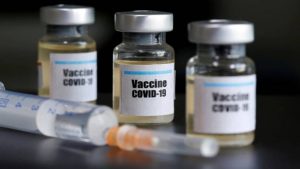
The World Health Organisation (WHO) may take a decision on granting Emergency Use Listing (EUL) to Bharat Biotech’s Covaxin this week.
- The vaccine should get international recognition with this. Post approval people wanting to travel abroad will not have difficulty
- A WHO pre-qualification, or Emergency Use Listing (EUL), is necessary for a vaccine company to supply vaccines to global facilities such as COVAX or international procurement.
- So far, eight vaccines have got an EUL from the WHO.
- WHO will also take a decision on including Bharat Biotech’s Covaxin in its list shortly.
- The WHO Emergency Use Listing Procedure (EUL) is a risk-based procedure for assessing and listing unlicensed vaccines, therapeutics and in vitro diagnostics with the ultimate aim of expediting the availability of these products to people affected by a public health emergency.
- To be eligible, the following criteria must be met:
- The disease for which the product is intended is serious or immediately life threatening, has the potential of causing an outbreak, epidemic or pandemic and it is reasonable to consider the product for an EUL assessment, e.g., there are no licensed products for the indication or for a critical subpopulation (e.g., children).
- Existing products have not been successful in eradicating the disease or preventing outbreaks (in the case of vaccines and medicines).
- The product is manufactured in compliance with current Good Manufacturing Practices (GMP) in the case of medicines and vaccines and under a functional Quality Management System (QMS) in the case of IVDs.
- The applicant undertakes to complete the development of the product (validation and verification of the product in the case of IVDs) and apply for WHO prequalification once the product is licensed.
Production Linked Incentive (PLI) Scheme For Automobile Industry:

Union Cabinet has approved the Production Linked Incentive (PLI) Scheme for Automobile Industry.
- The PLI scheme for the auto sector will incentivize high value Advanced Automotive Technology vehicles and products.
- The incentive structure will encourage industry to make fresh investments for indigenous global supply chain of Advanced Automotive Technology products.
- It is estimated that over a period of five years, the PLI Scheme for Automobile and Auto Components Industry will lead to fresh investment of over ₹42,500 crore, incremental production of over ₹2.3 lakh crore and will create additional employment opportunities of over 7.5 lakh jobs.
- The PLI Scheme for auto sector is open to existing automotive companies as well as new investors who are currently not in automobile or auto component manufacturing business.
- The scheme has two components viz Champion OEM Incentive Scheme and Component Champion Incentive Scheme.
- The Champion OEM Incentive scheme is a ‘sales value linked’ scheme, applicable on Battery Electric Vehicles and Hydrogen Fuel Cell Vehicles of all segments.
- The Component Champion Incentive scheme is a ‘sales value linked’ scheme, applicable on Advanced Automotive Technology components of vehicles, Completely Knocked Down (CKD)/ Semi Knocked Down (SKD) kits, Vehicle aggregates of 2-Wheelers, 3-Wheelers, passenger vehicles, commercial vehicles and tractors etc.
Production Linked Incentive (PLI) Scheme For Drone Industry:
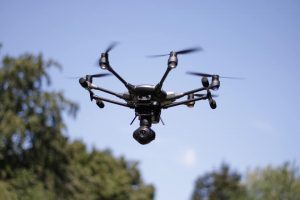
Union Cabinet has approved the Production Linked Incentive (PLI) Scheme for Drone Industry.
- The PLI Scheme for the Drones and Drone components industry addresses the strategic, tactical and operational uses of this revolutionary technology.
- The total amount allocated for the PLI scheme for drones and drone components is INR 120 crore spread over three financial years.
- The incentive for a manufacturer of drones and drone components shall be as high as 20% of the value addition made by her.
- The Government, has agreed to keep the PLI rate constant at 20% for all three years, an exceptional treatment given only to the drone industry. In PLI schemes for other sectors, the PLI rate reduces every year.
- The Government has agreed to widen the coverage of the incentive scheme to include developers of drone-related IT products also.
- The PLI for Drones and Drone components industry, will over a period of three years, lead to investments worth ₹ 5,000 Crore, increase in eligible sales of ₹ 1500 crore and create additional employment of about 10,000 jobs.
Tarballs Were Seen Lying On The Shore Of Mumbai Beach:
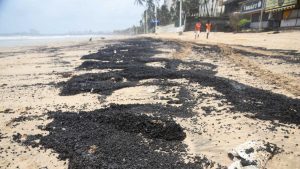
Black oil-emanating balls also called Tarballs were seen, lying on the shore of Mumbai Beach.
- Tarballs are dark-coloured, sticky balls of oil that form when crude oil floats on the ocean surface. They are formed by weathering of crude oil in marine environments.
- Some of the balls are as big as a basketball while others are smaller globules. They are transported from the open sea to the shores by sea currents and waves.
- Most of the time, the presence of several tarballs indicate an oil spill.
- However, its annual occurrence on the west coast during the monsoon has led marine biologists and experts to demand an investigation in the matter.
- Oil-well blowouts, accidental and deliberate release of bilge and ballast water from ships, river runoff, discharges through municipal sewage and industrial effluents also leads to the formation of tarballs.
- Once tarballs hit the beaches, they may be picked up by hand or by beach-cleaning machinery.
- Concerns:
- Tarballs that travel towards the coast can get stuck to the fishing nets installed in the sea, making it difficult for fishermen to clean.
- In addition, it could affect marine life, especially filter feeders like clams and oysters.
- Tarballs are difficult to break down, and can therefore travel for hundreds of miles in the sea.
- Tarball pollution is a major concern to the global marine ecosystem.




